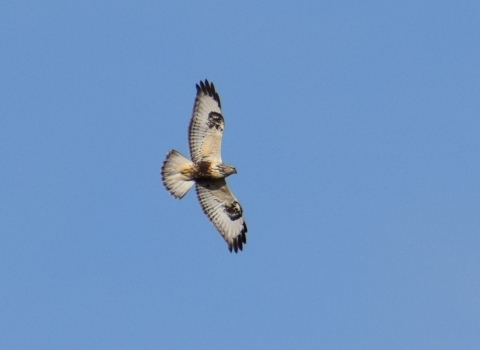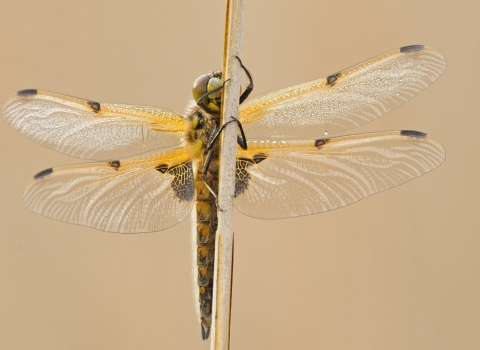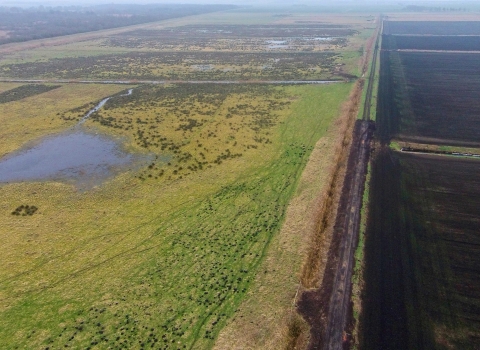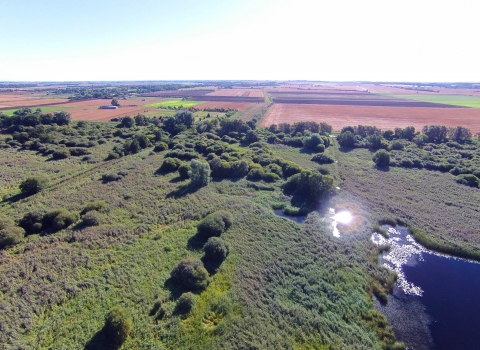Are you interested in strolling across the Fen in search of birds, and other wildlife, recording what you see and hear? Join the team of 60 ‘Great Fen Monitors’, a multi-skilled team of voluntary surveyors carrying out a wide range of ecological monitoring projects at the Great Fen throughout the year.
You will learn more about one of the largest wetland restoration projects in Europe, already over 2000 hectares in size. If you can identify birds by their calls as well as visually, contact me Henry Stanier, for an application form and an opportunity to discuss the role.
At any one time, we have a particular focus to the projects taking place, which you may be interested in contributing to as a volunteer or visitor to the Fen. This year, we have a special interest in birds, particularly birds-of-prey. If you visit the Great Fen for personal interest, we would greatly appreciate receiving your own wildlife sightings of birds or other wildlife which can be sent to Henry Stanier.
We will also be surveying for water voles and other mammals, this year and next, particularly in the spring and late summer. Perhaps you would be interested in these surveys? This involves looking for the signs of water voles and checking water vole floats, little rafts that the voles also leave their signs on. We are currently recruiting for new volunteers to join the team for mammal surveys, so do get in touch. In this case, no previous experience is required, just bring enthusiasm, a willingness to learn, an ability to walk along ditches, which can include steep sides and dense vegetation. It can be great fun, and the unexpected wildlife encounters are an added bonus.
If you would like to get an idea of what wildlife to look out for at the Great Fen, as well as checking for postings on social media, you can browse our sightings reports.
Our ongoing investigation into the movements of our stonechats at the Great Fen continues. If you would like to find out more about he exciting developments, read about our stonechat research and look out for updates on this topic and others in our monitoring & research blogs.
Since the 1800’s wildlife has been recorded at Holme Fen and Woodwalton Fen. What started out as wildlife recording has developed into more structured programme of ecological survey and monitoring. To understand the benefits of the restoration work at the Great Fen we need to gather data before, during and after.
We gather information about the farmland, the land being restored and the existing nature reserves in this diverse Living Landscape, and on the movement of wildlife within it and, in and out of the Great Fen area. The information gathered on groups of species and their habitats then shapes the future management of the landscape.
Water vole feeding at the Great Fen (https://www.youtube.com/watch?v=EJ9rxmuGQ84)
Water vole feeding at the Great Fen 2025, by Henry Stanier
I coordinate the annual programme of monitoring and research on the Great Fen. This programme helps to determine the effectiveness of restoration and the development of habitats and colonisation of species. This involves working alongside project partners, academic institutions and other landscape scale restoration projects.
Such work is carried out by a team of dedicated volunteers, the Great Fen Monitors as well as Wildlife Trust staff, Natural England staff, contractors, local natural history societies, university students and visiting naturalists.
A wide range of wildlife is monitored as part of the programme including birds, mammals, invertebrates, amphibians and plants. The abiotic data is also recorded, such as temperature, rainfall, water levels, water quality and carbon emissions. This enables us to look at any correlation of species movement and population with changing environmental conditions and feeds into national schemes measuring climate change.
Henry Stanier (Great Fen Monitoring & Research Officer)

Clifden Nonpareil, 4 October 2024 by Henry Stanier











